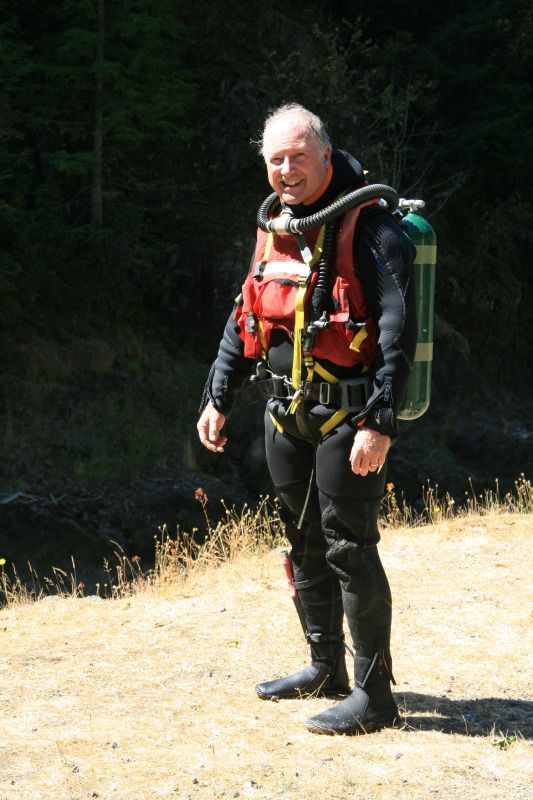Actually, I have been diving double hose regulators since 1959, and have never felt the need for a plug. One of the best methods of controlling the free flow by keeping the mouthpiece below the regulator is to simply put your snorkel in your mouth and swim face-down in the water. As Luis stated, the regulator will free flow when the mouthpiece is above the center of the diaphragm + the inches of water pressure needed to activate the valve. This is where the "adjustment" comes in. But if you snorkel on the surface with the regulator on your back, face down, your mouthpiece will automatically stay in the position below the regulator's diaphragm. If you get vertical, or on your back, then the free flow will be dramatic.
SeaRat
I like to do a lot of ocean drift diving. We particularly like going to Cozumel where there is some great drift diving.
The boat drop us off, they follows our bubbles (the visibility is so good they can basically see us), and when we are done they pick us up.
Whenever you are on the surface, you never put on a snorkel and put your face in the water. You and your body keep your face up looking for your boat and other boats in the area. If needed you may deploy a “surface marker buoy” (SMB, or safety sausage), but I have never felt the need since the boats have always been close.
The boats are not stationary, they are live. You don’t swim to the boat; you let the boat move toward you. The only exception is if someone is on the ladder and you are only a few feet away. If you need to swim, you put the regulator back in your mouth.
Swimming is counterproductive since you are now a moving target for the boat and if there are several divers in the water, it is harder to keep the group together for pick-up.
This is one of those situations when a snorkel is basically useless. I never wear one, but sometime I may have one in a pocket.
I have seen the same drift diving procedure used in several places and it is very effective. In Cozumel it is particularly easy because the visibility is so good and normally the currents are fairly steady.
I don’t know the details of the situation the OP was referring about, but I assumed it may be similar (at least it sounds like it could be).
---------- Post added September 9th, 2013 at 08:02 PM ----------
There has been a lot of requests for a DSV (dive surface valve) mouthpiece, similar to the DSV on rebreathers.
I have designed and built a couple of different prototypes and they work well, but I have some improvements that I want to add for a production model. I have the design partially done in CAD, I just need to finish with some details.
More important, since I don’t actually have a business (designing is just a hobby for me), it will probably be up to VDH to have them made. It is in the list of things to do, but there is a limited number of new items that he can tackle at a time.






